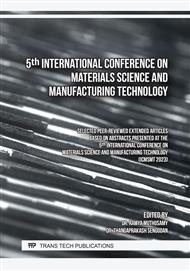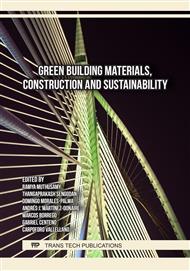p.67
p.77
p.85
p.95
p.107
p.113
p.135
p.143
p.151
Experimental Studies on Concrete Using the Partial Replacement of Cement by Red Mud
Abstract:
In today’s construction scenario, next to steel, wood, and aluminum, concrete is one of the most often utilized building materials in modern construction. The researchers have modified the characteristics of concrete as a result of its widespread use. Numerous waste products are employed with concrete, either as a full substitute for cement or as a partial replacement. One such byproduct of Bayer's technique for preparing alumina from bauxite refining is red mud. This research performs a series of tests by replacing 10%, 15%, and 20% of cement by weight with red mud to examine the effects of red mud on the strength and durability of concrete. Based on the findings, red mud may be used to replace 15% of the cement weight in concrete to boost its strength qualities. In order to make different grades of concrete, different amounts of red mud were added to cement in comparative research. In this investigation, fine aggregate was used to partially replace cement in concrete at a dosage of 0–24% by weight of cement while red mud was changed from 0–24% in the presence of 8% fine aggregate. The findings demonstrate that optimum fine aggregate usage results in increased strength, with the impact being more obvious in the context of optimum red mud dose. As a result, the use of red mud as a strength modifier in the presence of fine aggregate can reduce the need for cement and promote environmentally friendly building methods.
Info:
Periodical:
Pages:
107-112
Citation:
Online since:
October 2023
Authors:
Price:
Сopyright:
© 2023 Trans Tech Publications Ltd. All Rights Reserved
Share:
Citation:



